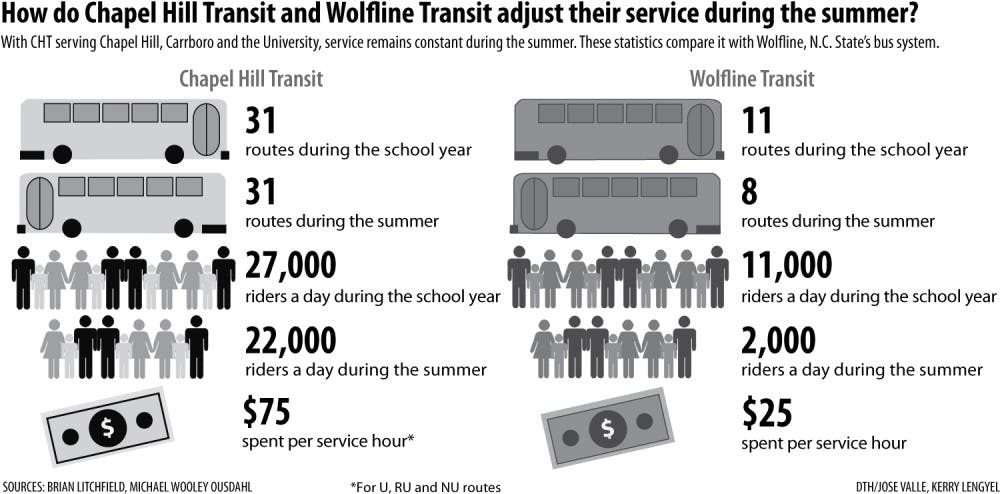For some schools, this is the case, but for Chapel Hill Transit things are much different.
Since the transit system covers a combination of Chapel Hill, Carrboro and the University, ridership doesn’t drastically change from when school is in session to the summer.
Brian Litchfield, director of Chapel Hill Transit, said the odds of getting a seat on the bus during the summer are better but riders are fairly consistent year-round.
“There’s a good blend of students and people going to and from work,” Litchfield said. “We don’t see swings significant enough to reduce or change our core or basic services.”
According to Litchfield, the transit system will go from 27,000 rides a day when school is session to 22,000 rides a day during the summer, rounding out to about 6.9 million trips a year.
While the town does share in the payment for the transit system, the University is solely responsible for specific lines and routes — most notably the U, RU and NU.
Based on the fiscal year fall 2014, Litchfield said the University pays $75 per service hour for their direct billed cost.
For N.C. State University, the Wolfline bus system sees a much more drastic decrease in ridership over the summer since the bus line is solely a university-based line.



